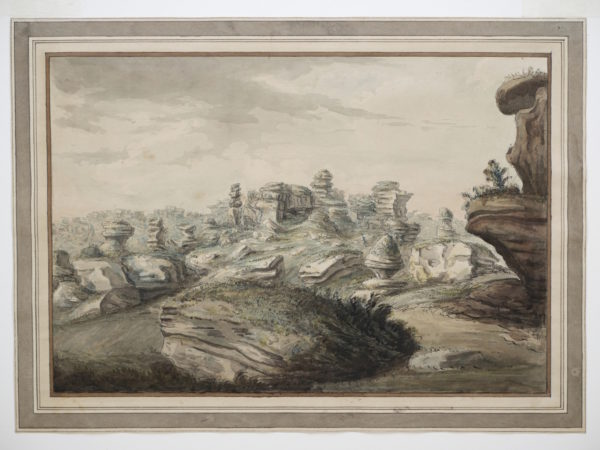Griffith, Moses (1747-1819)
Born at Trygarn, Bryncroes, Caernarfonshire, 25 March 1747, and christened at Botwnnog church where he later attended the Free School kept by the rector, Richard Thomas. He received no further education, but in 1769 he was engaged by Thomas Pennant, who, discovering his aptitude as a draughtsman, employed him to illustrate his tours.
Pennant, in his Literary Life …, refers to Moses Griffith as ‘an able artist ‘ who could also engrave and who was also ‘tolerable skilled in music.’ He accompanied Pennant on all his tours between 1769 and 1790. Engravings after his drawings were used to illustrate several of Pennant’s published works, notably the accounts of his tours in Wales and Scotland. These, however, formed only a small part of Griffith’s output as many more of his water-colour drawings of churches, country houses, and other scenes in England and Wales were used to enhance several extra-illustrated copies of Pennant’s works.
In addition to these, Griffith was also responsible for many illustrations of animals, birds, and fishes used in Pennant’s books on natural history. That he possessed also no mean skill as a portrait painter is evident from a study of the number of small scale sketches from life. After Pennant’s death in 1798 Griffith was employed by his son David Pennant, and he executed a group of about 200 water-colours of Welsh views for him between 1805 and 1813. He was living at Whitford, near Holywell, in 1781 and married Margaret Jones of the same parish. There were two children of the marriage. A letter in The Gentleman’s Magazine for December 1809 from Griffith shows that he then resided at Wibnant near Holywell; he died there 11 November 1819, and was buried at Whitford, 15 November 1819.
The National Library of Wales possesses many of his watercolours of Welsh scenes, churches, country houses, and portraits, including two self-portraits, as well as several extra-illustrated volumes of Pennant’s works, containing in all several hundred original sketches and drawings by Griffith. The National Museum of Wales also possesses a collection of his watercolours, and his work is to be found in the British Museum and the Victoria and Albert Museum.
Showing the single result
